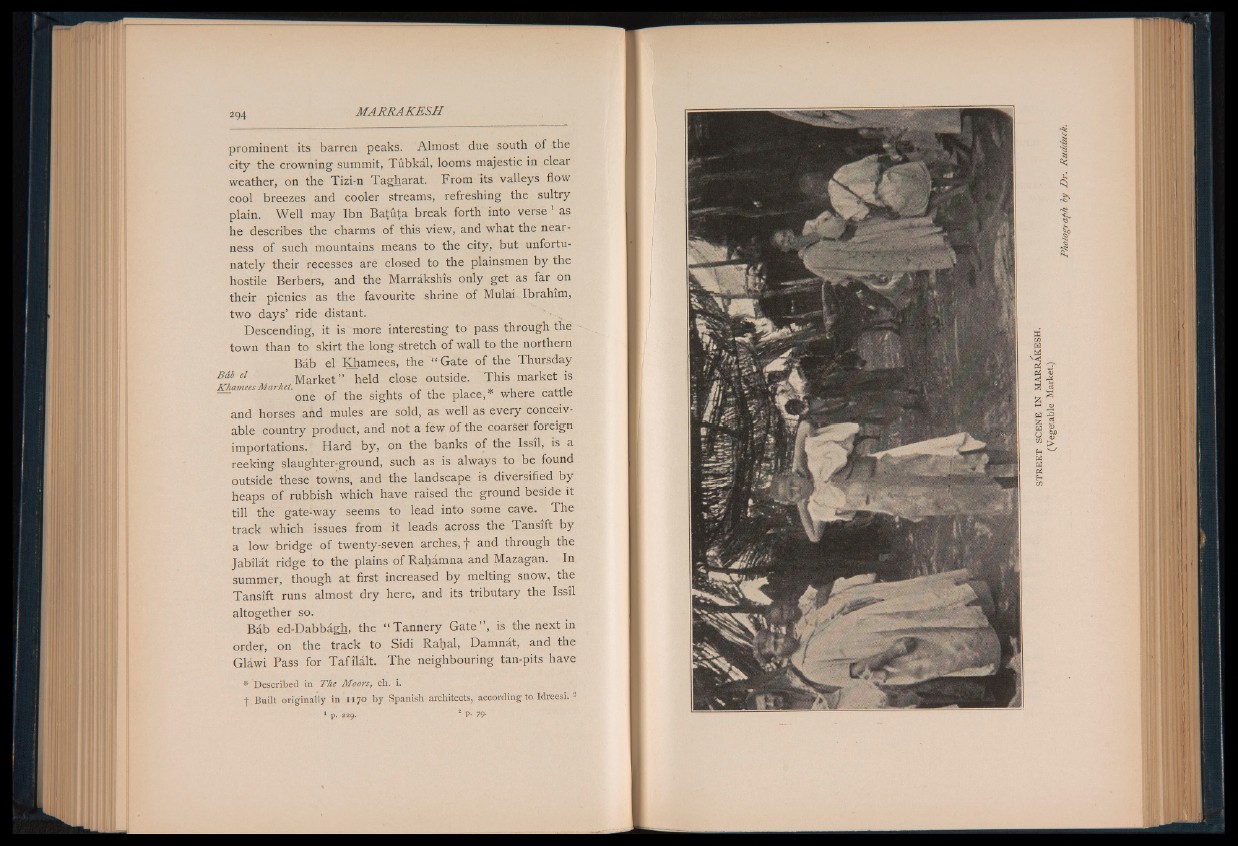
294 MARRAKESH
prominent its barren peaks. Almost due south of the
city the crowning summit, Tubkal, looms majestic in clear
weather, on the Tizi-n T a gharat. From its valleys flow
cool breezes and cooler streams, refreshing the sultry
plain. Well may Ibn Batuta break forth into verse 1 as
he describes the charms of this view, and what the nearness
of such mountains means to the city, but unfortunately
their recesses are closed to the plainsmen by the
hostile Berbers, and the Marrakshis only get as far on
their picnics as the favourite shrine of Mulai Ibrahim,
two days’ ride distant.
Descending, it is more interesting to pass through the
town than to skirt the long stretch of wall to the northern
Bab el Khamees, the “ Gate of the Thursday
B a b e l Market” held close outside. This market is
Khamees Market. A , #
one of the sights of the place,* where cattle
and horses and mules are sold, as well as every conceivable
country product, and not a few of the coarser foreign
importations. Hard by, on the banks of the Issil, is a
reeking slaughter-ground, such as is always to be found
outside these towns, and the landscape is diversified by
heaps of rubbish which have raised the ground beside it
till the gate-way seems to lead into some cave. The
track which issues from it leads across the Tansift by
a low bridge of twenty-seven arches, f and through the
Jabilat ridge to the plains of Rahamna and Mazagan. In
summer, though at first increased by melting snow, the
Tansift runs almost dry here, and its tributary the Issil
altogether so.
Bab ed-Dabbagh, the “ Tannery G ate ” , is the next in
order, on the track to Sidi Rahal, Damnat, and the
Glawi Pass for Tafilalt. The neighbouring tan-pits have
* Described in The Moors, ch. i.
| Built originally in 1170 by Spanish architects, according to Idreesi. 2
1 p. 229. 2 P* 79*